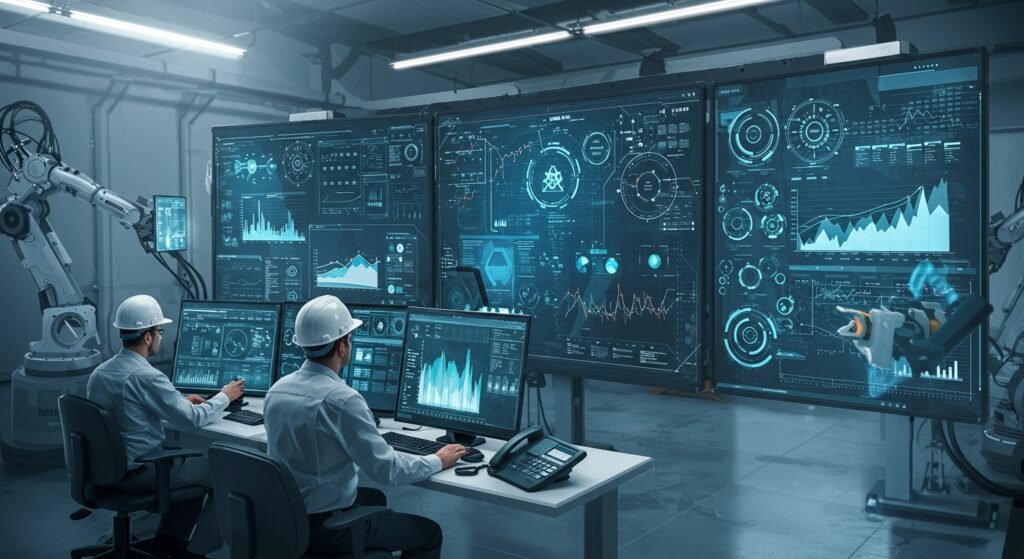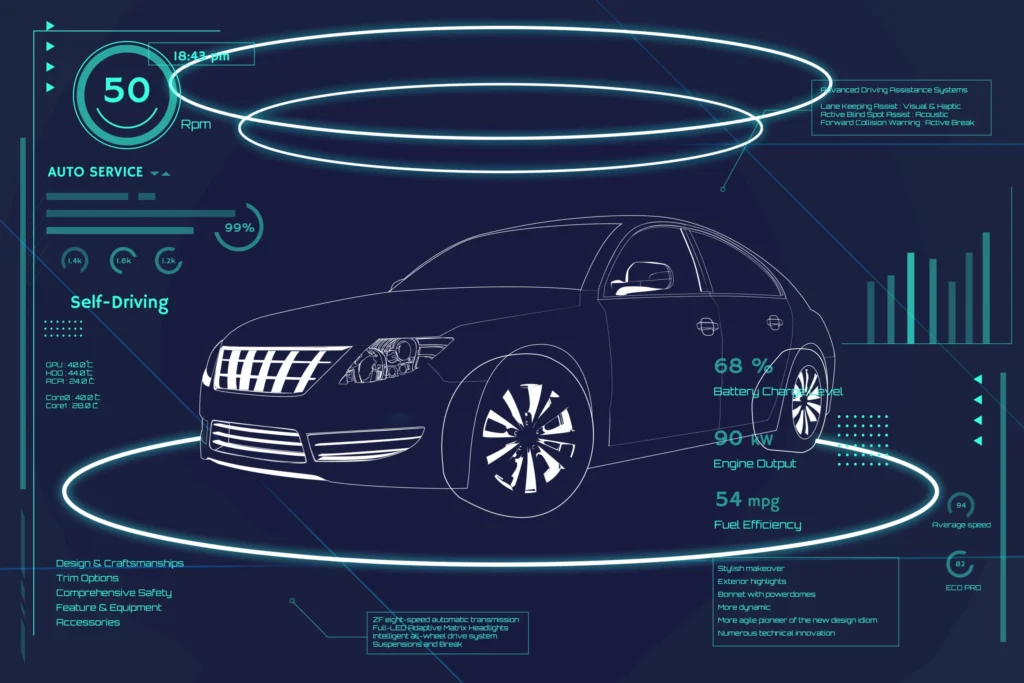Artificial Intelligence in Maintenance Planning and Scheduling
The landscape of industrial operations is undergoing a profound transformation, largely driven by the integration of advanced technologies. Among these, Artificial Intelligence (AI) stands out as a game-changer, particularly in the realm of maintenance. AI maintenance is not just a buzzword; it’s a critical component reshaping how organizations approach equipment upkeep, operational efficiency, and long-term sustainability. By leveraging sophisticated algorithms and data analysis, AI empowers businesses to move beyond traditional, often reactive, maintenance strategies towards highly predictive and proactive approaches. This shift promises significant benefits, including reduced downtime, optimized resource allocation, and substantial cost savings. Understanding the nuances of AI’s role in maintenance planning and scheduling is essential for any modern enterprise aiming to stay competitive and resilient in today’s fast-evolving industrial environment.
Table of Contents
- The Evolution of Maintenance: From Reactive to Predictive
- How AI Maintenance Transforms Planning and Scheduling
- Key Benefits of Implementing AI Maintenance Solutions
- Challenges and Future Outlook for AI Maintenance
- Conclusion
The Evolution of Maintenance: From Reactive to Predictive
Historically, maintenance practices have evolved through several stages, each addressing the limitations of its predecessor. From simply fixing things when they break to scheduled inspections, the goal has always been to minimize operational disruptions and extend asset lifespan.
Reactive vs. Preventive Maintenance
Reactive maintenance, also known as run-to-failure, involves addressing equipment breakdowns only after they occur. While seemingly cost-effective in the short term, this approach often leads to unexpected downtime, higher repair costs, and potential safety hazards. Preventive maintenance, on the other hand, involves scheduled inspections and servicing based on time intervals or usage. This reduces sudden failures but can lead to unnecessary maintenance, replacing parts that are still functional, or missing failures that occur between scheduled checks.
The Rise of Predictive Maintenance with AI
The advent of Industry 4.0 and the proliferation of IoT sensors have paved the way for predictive maintenance. This advanced approach uses data analytics to predict when equipment failure is likely to occur, allowing maintenance tasks to be performed precisely when needed. AI takes predictive maintenance to the next level by processing vast amounts of data—from sensor readings and historical failure logs to environmental factors—to identify subtle patterns and anomalies that human operators might miss. This allows for unparalleled accuracy in forecasting potential issues, ensuring interventions are timely and effective.
How AI Maintenance Transforms Planning and Scheduling
The integration of AI into maintenance workflows fundamentally alters how planning and scheduling are executed, leading to more intelligent and adaptive operations. The benefits of embracing AI maintenance are clear: optimized resource use, reduced idle time, and a significant boost to overall productivity.
Predictive Analytics for Equipment Failure
AI algorithms analyze real-time data from machinery, looking for indicators of wear, stress, or impending failure. Machine learning models, trained on historical data, can predict the remaining useful life (RUL) of components with remarkable accuracy. This allows maintenance teams to schedule repairs or replacements precisely when they are most effective, avoiding both premature interventions and catastrophic breakdowns.
Optimizing Schedules and Resource Allocation
Beyond predicting failures, AI excels at optimizing the entire maintenance schedule. It considers factors like technician availability, spare parts inventory, equipment criticality, and production schedules to create dynamic, efficient maintenance plans. This ensures that resources are allocated optimally, minimizing disruption to production and maximizing technician productivity. For instance, AI can group maintenance tasks that require the same tools or skills, streamlining operations and reducing travel time between sites.
Data-Driven Decision Making
AI provides maintenance managers with actionable insights derived from complex datasets. Dashboards powered by AI can visualize equipment health, identify maintenance backlogs, and highlight areas for process improvement. This data-driven approach fosters a culture of continuous improvement, allowing organizations to refine their strategies based on concrete evidence rather than educated guesswork. For further reading on comprehensive asset management, visit our Asset Management Strategies page.
Key Benefits of Implementing AI Maintenance Solutions
The adoption of AI in maintenance brings a multitude of advantages that directly impact an organization’s bottom line and operational efficiency.
Significant Cost Reduction
By preventing unexpected breakdowns and optimizing maintenance schedules, AI directly reduces operational costs. This includes lower repair costs due to proactive intervention, reduced inventory holding costs for spare parts, and significant savings from avoided production losses during downtime. Studies show that predictive maintenance can reduce maintenance costs by 10-40% and downtime by 50%.
| Benefit Area | Impact of AI Maintenance | Estimated Improvement |
|---|---|---|
| Downtime Reduction | Predicts failures, allows proactive fixes | Up to 50% |
| Maintenance Costs | Optimizes scheduling, reduces emergency repairs | 10-40% |
| Equipment Lifespan | Prevents minor issues from becoming major, reduces wear | 20-40% |
| Operational Efficiency | Streamlined processes, better resource allocation | 15-30% |
Enhanced Operational Efficiency
With AI-powered maintenance, organizations can achieve higher equipment uptime and smoother operations. Production lines run more consistently, meeting targets with greater reliability. The efficiency extends to the maintenance team itself, as technicians can plan their work more effectively, focusing on critical tasks rather than reacting to emergencies.
Improved Safety and Reliability
Malfunctioning equipment poses significant safety risks. By accurately predicting failures, AI helps prevent accidents, creating a safer working environment for employees. Furthermore, the enhanced reliability of machinery contributes to product quality and consistency, strengthening a company’s reputation.
Challenges and Future Outlook for AI Maintenance
While the benefits are compelling, implementing AI maintenance solutions is not without its challenges. However, the future looks bright as these hurdles are actively being addressed.
Data Integration and Quality
One of the primary challenges is integrating disparate data sources and ensuring the quality and consistency of the data fed into AI models. Legacy systems, varied sensor types, and siloed information can complicate this process. Organizations must invest in robust data infrastructure and governance strategies to overcome this.
The Human Element and Training
The successful adoption of AI maintenance also requires a skilled workforce. Technicians and engineers need to be trained not only in operating AI-powered tools but also in interpreting the insights they provide. This shift requires a collaborative approach between human expertise and AI capabilities. More insights into AI’s broader impact can be found on sites like IBM’s AI Overview.
Conclusion
Artificial Intelligence is undeniably transforming maintenance planning and scheduling, offering a powerful paradigm shift from reactive firefighting to proactive, data-driven optimization. The advantages, including significant cost reductions, enhanced operational efficiency, and improved safety, make a compelling case for its adoption. While challenges related to data and workforce adaptation exist, the continuous advancements in AI technology and increasing industry adoption suggest that AI maintenance will become an indispensable component of successful industrial operations. Embracing this technology is not merely an upgrade; it’s a strategic imperative for any organization looking to thrive in the modern, connected industrial landscape.


